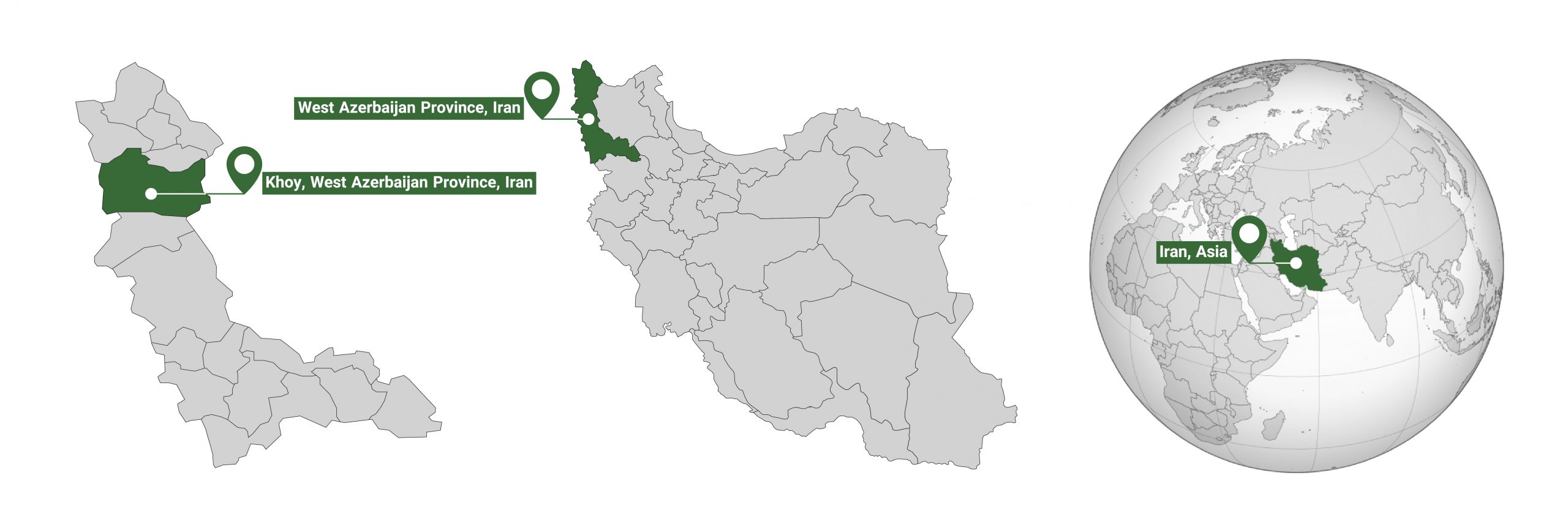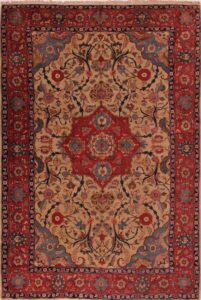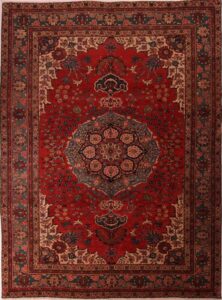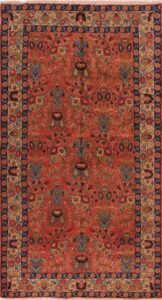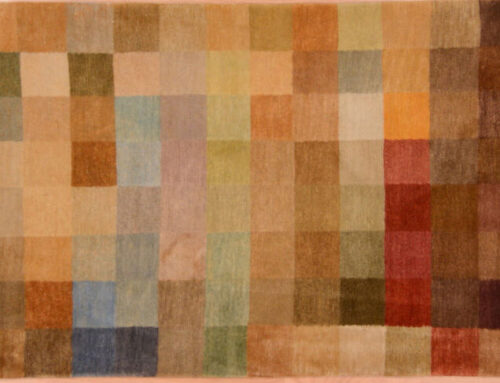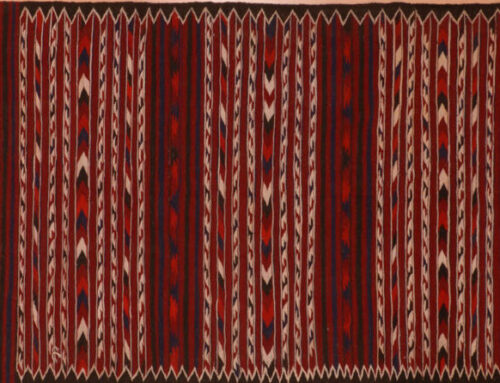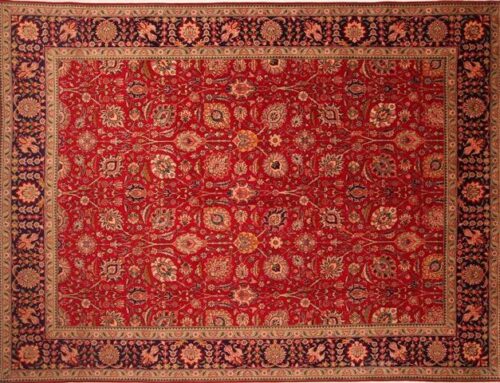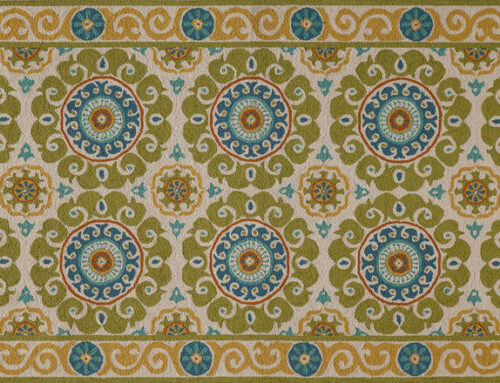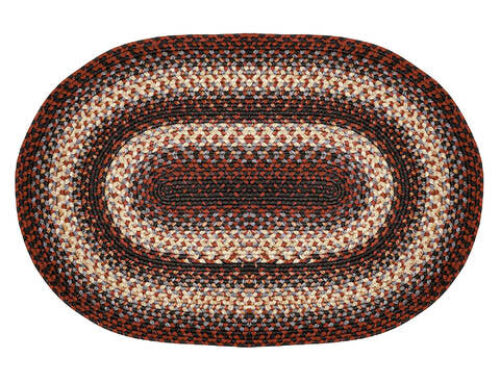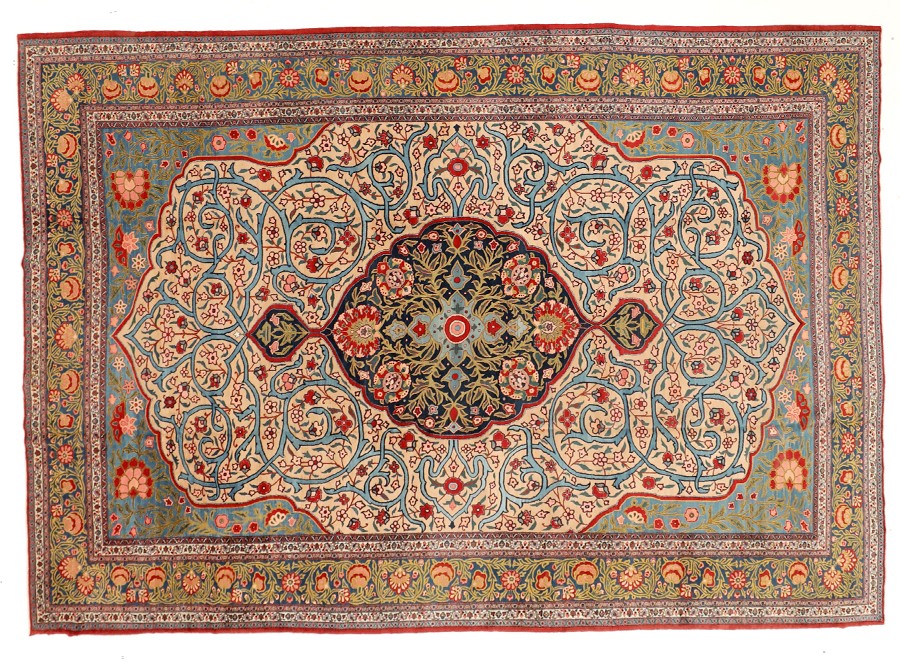
History of Khoy Rugs
Khoy carpet weaving is known in the trade from the first quarter of the twentieth century. Khoy weavings were marketed as Tabriz carpets but they have a lower grade quality in comparison. They were mainly produced for the lower-income consumer, for both domestic and foreign markets. Khoy carpets were made in large quantities and provided an economic boost for the city’s population.
By the last quarter of the twentieth century, in accordance with world market demand, most Khoy weavers began to produce carpet qualities similar to those of Tabriz.
Characteristics of Khoy Rugs
-
Material and Knots
Khoy carpets have a cotton foundation and a wool pile. The Turkish (symmetric) or Persian (asymmetric) knots are employed. The Turkish knot is foremost, but the Persian knot is sometimes encountered.
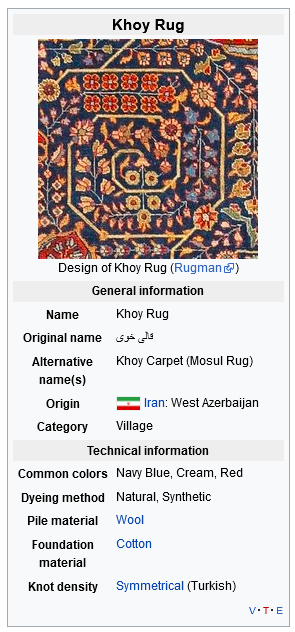
Khoy Rug Infobox | © WikiRug
By the last quarter of the twentieth century, in accordance with world market demand, most Khoy weavers began to produce carpet qualities similar to those of Tabriz. These carpets were made in a high quality, including those with a silk pile.
-
Color
The carpets have colorations similar to Tabriz styles.
-
Design and Pattern
The carpets have floral designs similar to Tabriz styles.
Collections
- Khoy Rug | © Rugman
- Khoy Rug | © Rugman
- Khoy Rug | © Rugman

